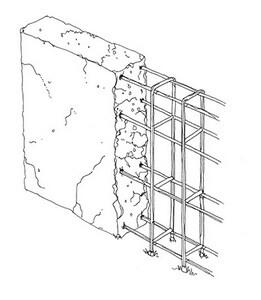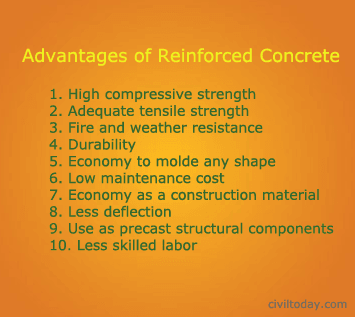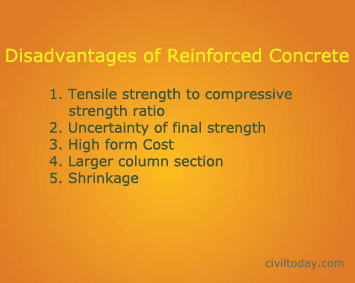Reinforced concrete is a combination of traditional cement concrete with reinforcements (steel bar). This combination is made to utilize the compressive strength of concrete and tensile strength of steel simultaneously.
In reinforced concrete, the components work together to resist many types of loading. Concrete resists compression and steel reinforcement resists tension forces.
Reinforced concrete, as an economic building material, is very popular nowadays. It is widely used in many types building around the world. Along with many advantages, reinforced concrete also poses some disadvantages also.

Advantages of Reinforced Concrete

- Reinforced concrete has a high compressive strength compared to other building materials.
- Due to the provided reinforcement, reinforced concrete can also withstand a good amount of tensile stress.
- Fire and weather resistance of reinforced concrete is fair.
- The reinforced concrete building system is more durable than any other building system.
- Reinforced concrete, as a fluid material, in the beginning, can be economically molded into a nearly limitless range of shapes.
- The maintenance cost of reinforced concrete is very low.
- In structures like footings, dams, piers etc. reinforced concrete is the most economical construction material.
- It acts like a rigid member with minimum deflection.
- As reinforced concrete can be molded to any shape required, it is widely used in precast structural components. It yields rigid members with minimum apparent deflection.
- Compared to the use of steel in structure, reinforced concrete requires less skilled labor for the erection of the structure.
{adselite}
Disadvantages of Reinforced Concrete

- The tensile strength of reinforced concrete is about one-tenth of its compressive strength.
- The main steps of using reinforced concrete are mixing, casting, and curing. All of this affects the final strength.
- The cost of the forms used for casting RC is relatively higher.
- For multi-storied building the RCC column section for is larger than steel section as the compressive strength is lower in the case of RCC.
- Shrinkage causes crack development and strength loss.

